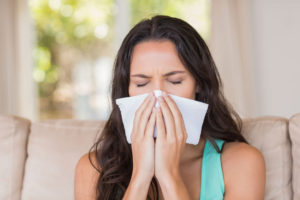24 Sep Fall Allergies

Every fall, you’re suddenly sneezing, coughing. Could it be fall allergies?
It’s certainly a possibility. Ragweed blooms profusely this time of year. Those lovely, falling leaves become moldy, rotting vegetation after they hit the ground. And no surprise it turns out many people are sensitive to both ragweed pollen and mold.
Dust mites can also trigger fall allergy symptoms. Although they’re present year-round, dust mites are stirred up by dirty ventilation systems. When you turn on your furnace, mold and dust mites are jettisoned into your air space.
Ready to tackle your fall allergies with medication? Take a look at these tips first:
• Be careful with certain over-the-counter (OTC) nonprescription medications. Nasal allergy drops and eye drops have agents that can create what’s known as a “rebound effect” which means that symptoms actually become worse, despite the temporary relief.
• A primary care doctor may advise specific OTC allergy medications as the first step and for many people, they do take the edge off allergies so you can function just fine. Note: the decongestant in some allergy medications, like Claratin, can raise blood pressure. Talk to your doctor about which is right for you.
• Mucinex can help with drainage and postnasal drip that causes coughing. Some people need a combination approach over-the-counter and prescription medications.
• If those don’t provide relief, your doctor may prescribe a stronger antihistamine. You may need to try different brands until you find one that works best for you. Try one for a week, and if it hasn’t worked, try another.
• You may also need a prescription steroid nasal spray to control nasal congestion and postnasal drip. Some people need prescription eyedrops for itchy eyes.
• If you’ve tried all that without relief, see an allergist. You may be highly allergic to multiple things in your environment.
Coping with fall allergies may take an experimental approach, but, for most, relief is close at hand.

